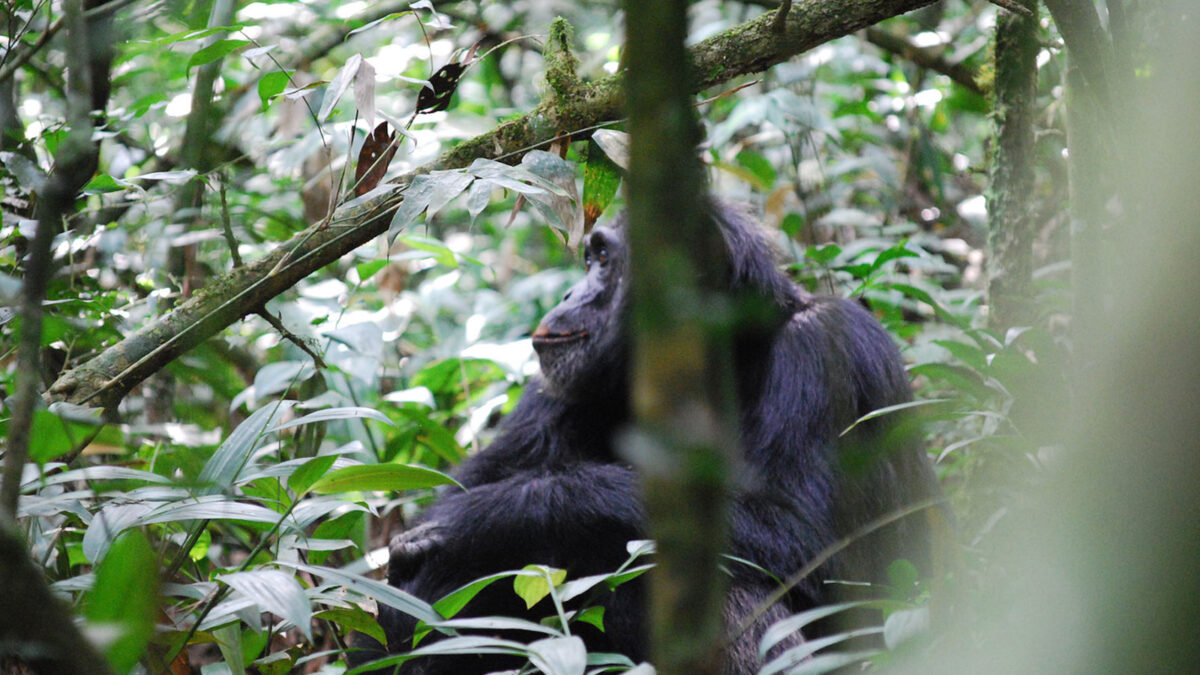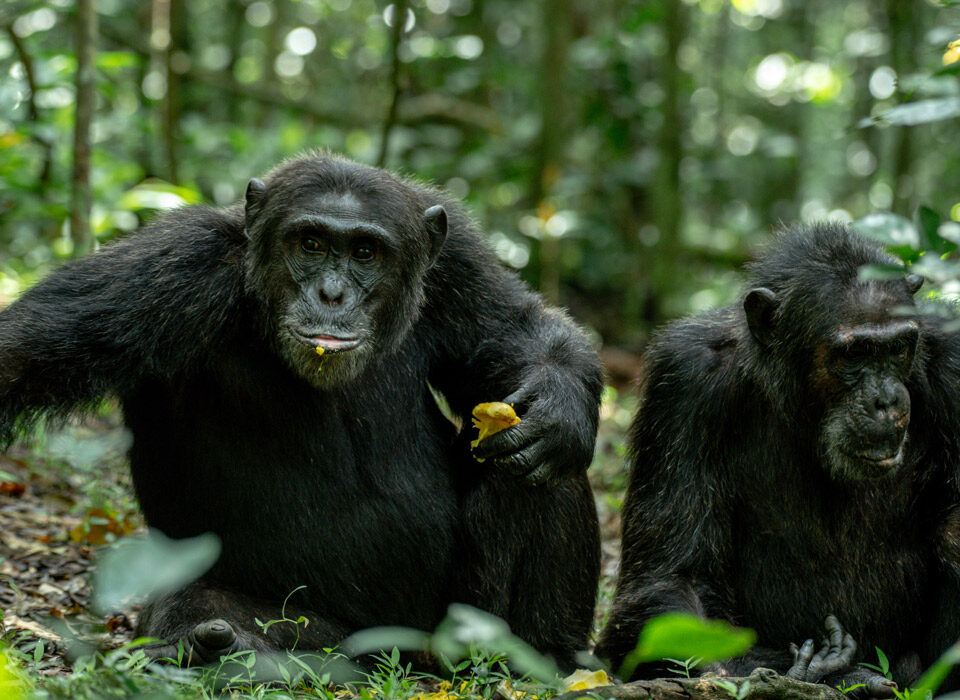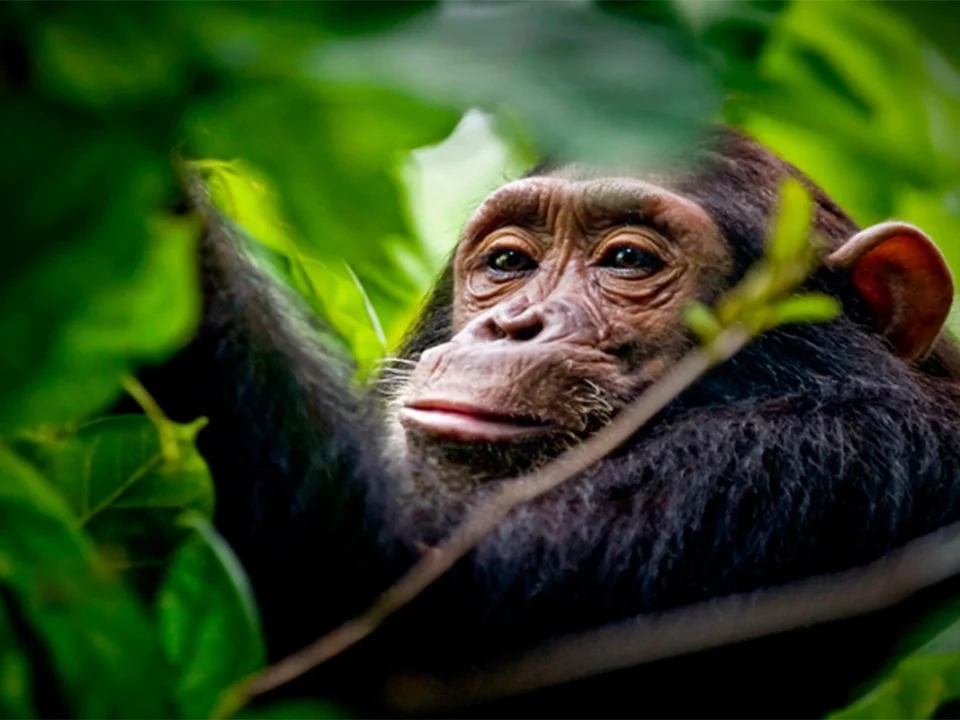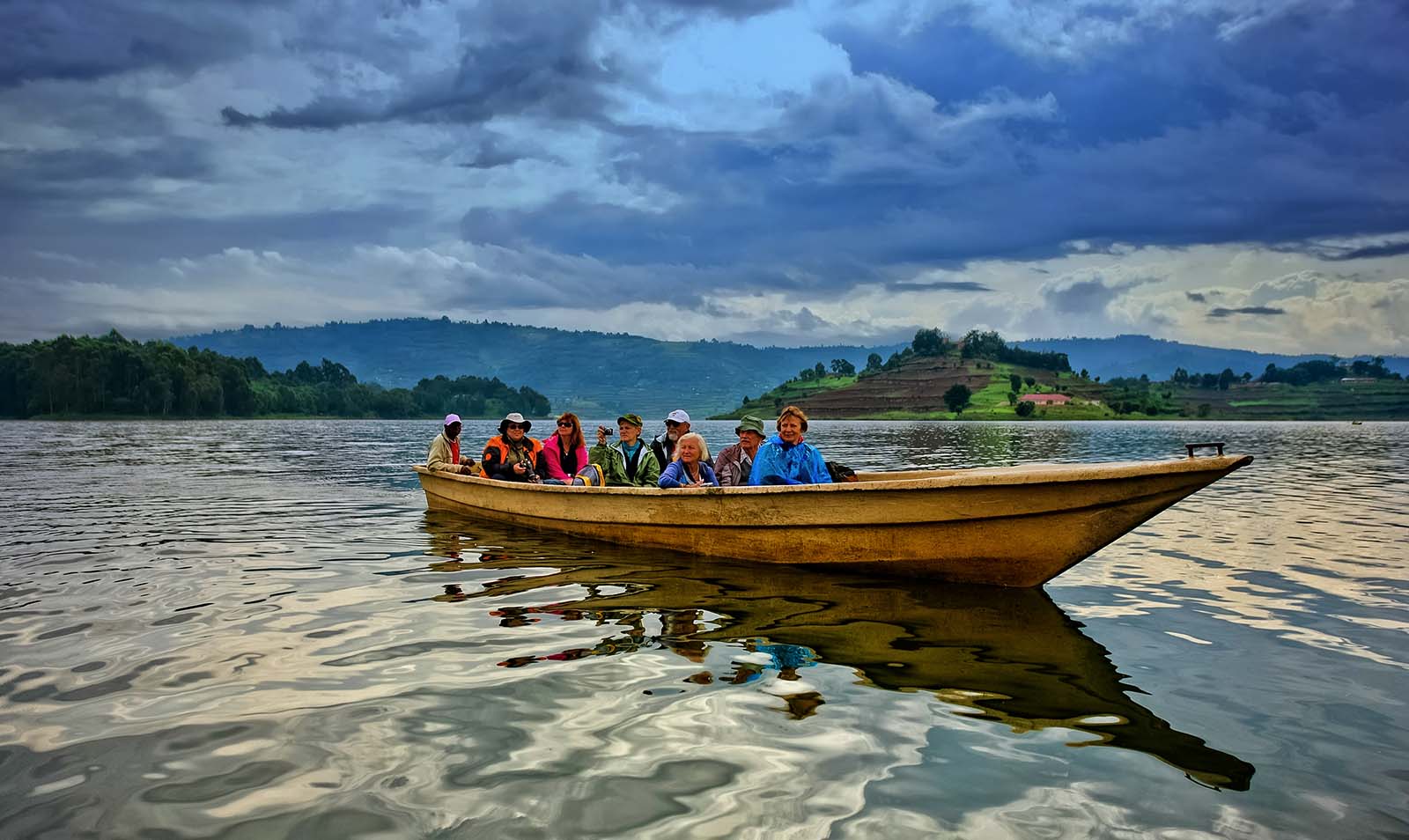
Why Visit Lake Bunyonyi
January 18, 2023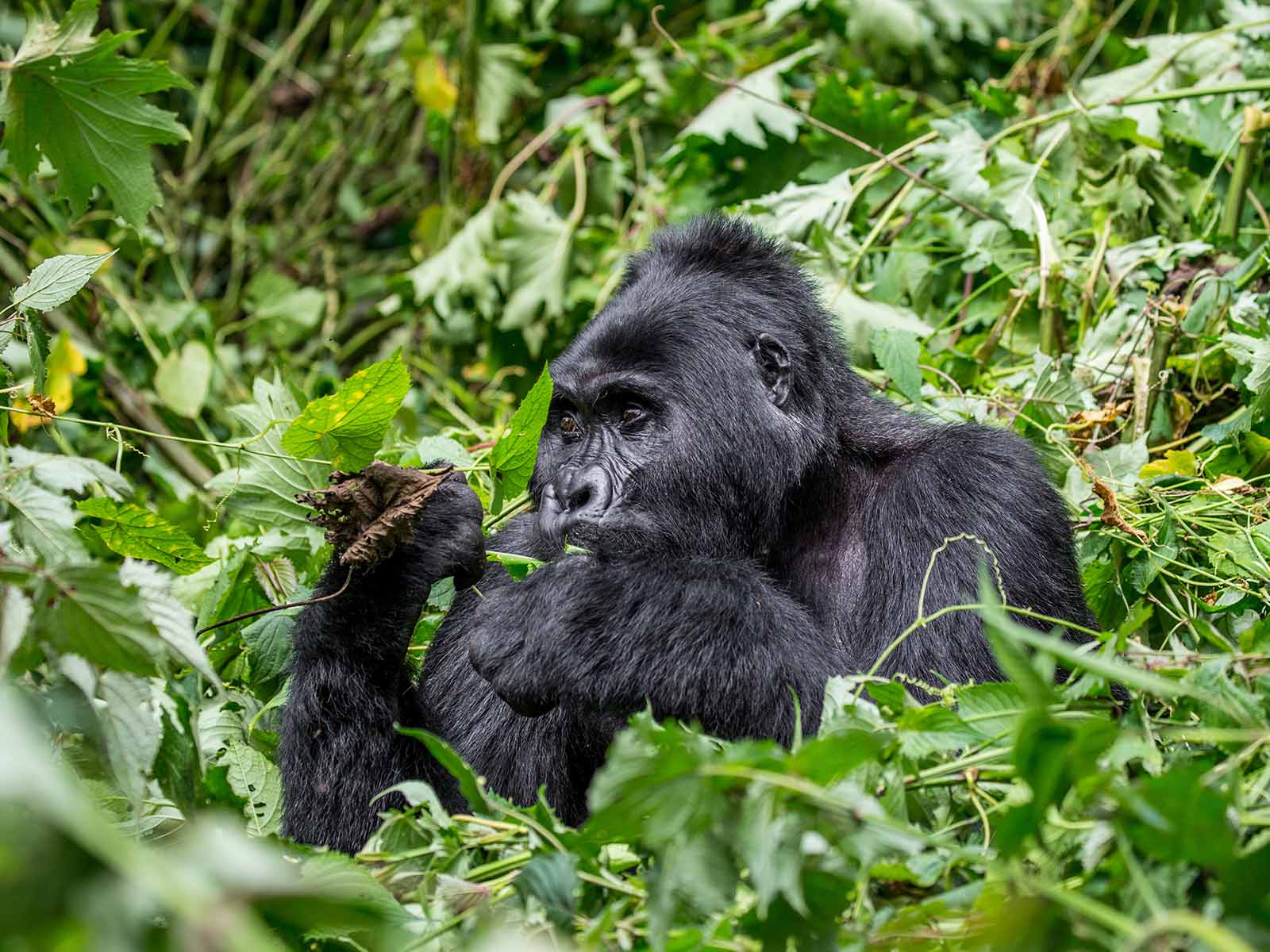
An Unforgettable Christmas Gorilla Trekking Safari
January 20, 2023Exploring the Wildlife and Natural Beauty of Kibale Forest National Park
Also Known as the “Primate Capital of the world”, Kibale Forest National Park is a protected area located in western Uganda, known for its diverse primate population, including the endangered chimpanzee. The park covers an area of 795 square kilometers and is home to over 13 primate species, including red colobus and L’Hoest’s monkeys. The park also has a rich bird life with over 375 species recorded. It’s an ideal destination for wildlife enthusiasts and bird watchers. The park offers visitors the opportunity to track chimpanzees and other primates, as well as forest walks and cultural tours. The park is located close to the Queen Elizabeth National Park and can be easily combined with a visit to this park.
Discovering the Abundance of Primates in Kibale National Park
Kibale National Park in Uganda has earned the distinction of being known as the “primate capital of the world” due to its high concentration and diversity of primate species. This reputation was solidified when the park was included in the New York Times’ list of 52 places to visit. With 13 out of Uganda’s 20 primate species found in the park, it is considered the best location in the world for tracking chimpanzees. The park’s primate population also includes other endangered and critically endangered species such as L’Hoest’s monkey, red colobus, and many more. It’s a popular destination for researchers, conservationists, and visitors interested in observing and studying primates in their natural habitat.
Why You Should Visit Kibale Forest National Park
Chimpanzee Tracking
Kibale National Park is home to a wide variety of wildlife, but one of the main attractions for visitors is the opportunity to go chimpanzee tracking. Similar to gorilla trekking, visitors have the chance to explore the park’s dense forests in search of these magnificent animals in their natural habitat.
The tracking experience begins early in the morning at the Kanyanchu visitor center, where participants receive a briefing on the proper behavior and etiquette for observing chimpanzees. From there, visitors travel in a small group on a guided hike through the forest, with the goal of finding a troop of chimpanzees.
Once a troop is located, visitors have the chance to spend up to an hour observing the chimpanzees as they go about their daily activities, such as playing, eating, grooming each other, nursing, and relaxing. The entire tracking experience can take up to 5 hours.
One of the most striking features of chimpanzees is their physical characteristics, such as their arms that extend beyond the knees, the prominent mouth, and their bodies covered in brown to black hair. While they are able to climb and move around in trees, they also spend significant time on the ground.
In terms of behavior, chimpanzees are highly social animals and they live in communities of several dozens, led by an alpha male. They typically spend most of their time in trees, where they forage for food. The visitors can observe their eating habits and other behaviors in their natural habitat. Overall, chimpanzee tracking in Kibale National Park is a unique and unforgettable experience for visitors to witness the beauty and complexity of these amazing animals.
Chimpanzee Habituation Experience
The Chimpanzee Habituation Experience is a unique opportunity for visitors to gain a deeper understanding of these magnificent animals and the process of habituating them to human presence. This process is a long-term and complex one, taking around two years to complete.
Visitors have the chance to join a team of researchers, park rangers, and guides as they venture into the forest to observe chimpanzees in their natural habitat. Unlike traditional chimpanzee trekking, where visitors are only permitted to spend an hour with the chimpanzees once they are located, the habituation experience allows visitors to spend up to four hours with the chimpanzees.
The activity begins early in the morning as the chimpanzees leave their nests and venture out to forage for food, groom each other, rest, and play. Visitors will have the opportunity to observe them throughout the day, including as they return to their nests at the end of the day. This experience is truly fascinating, as it allows visitors to gain a deeper understanding of chimpanzee behavior and the process of habituation in action.
Additionally, the habituation experience allows for more intimate and prolonged observations of the chimpanzees, giving visitors a rare glimpse into their social structure, communication, and daily activities. This can be very beneficial for researchers and conservationists who are studying these animals, as well as visitors who are interested in learning more about these animals and their behaviors.
Kibale National Park: A Diverse Haven for 13 Primate Species
Kibale Forest National Park, located in Uganda, is known for its stunning natural beauty and diverse ecosystem. The park is home to a lush tropical rainforest and an abundance of wildlife, including a wide variety of primate species.
One of the most notable features of Kibale Forest National Park is its impressive concentration of chimpanzees, our closest living relative. In fact, the park is considered to have the greatest concentration of chimpanzees in all of Uganda.
In addition to chimpanzees, the park is home to 13 different species of primates and monkeys, making it one of the most diverse and densely populated areas for primate populations in Africa. These species include the red Colobus, black and white Colobus, blue monkey, grey-cheeked Mangabey, red-tailed monkey, L’Hoest monkey, bush baby, and Potto. Other primate species found in the park include the Vervet monkey, Olive baboon, Demidoff Galago, Patas monkey and the Uganda mangabey.
This incredible variety of primate species offers visitors the opportunity to see a wide range of behaviors and characteristics, making Kibale National Park a must-see destination for wildlife enthusiasts and researchers alike. The park is also a major tourist attraction with many activities like chimpanzee tracking, Chimpanzee habituation, bird watching, and many more.
Birding/ Bird Watching in Kibale Forest National Park
One of the main attractions of Kibale National Park is bird watching, as the park is home to over 350 species of birds, including 6 endemic species. The park’s dense forested area and marshlands provide a diverse range of habitats for a wide variety of bird species, making it a popular destination for birders. Visitors can explore the park on a game drive or a nature walk with an experienced guide, and have the opportunity to see a wide variety of birds in their natural habitat.
Birders will be excited to know that Kibale National Park is home to four bird species that are unique to this park and haven’t been seen anywhere else in Uganda’s national parks. These include the blue-headed bee-eater, the masked Apalis, the Nahan’s francolin, and the Cassin’s spinetail. Migratory birds are also typically seen here between November and April.
The Bigodi Wetland Sanctuary, which is accessible through a 4-hour walking track, is considered the premier birding location in Kibale National Park. The sanctuary is home to a wide variety of bird species, and is a must-see destination for birders visiting the park.
Nature Walks and Hiking in Kibale National Park
Nature walks in Kibale National Park offer visitors the chance to explore the lush tropical rainforest and observe a wide variety of wildlife in their natural habitat. These guided walks, led by park rangers, can be taken during the day or at night and are a great way to get closer to nature.
Day nature walks typically begin early in the morning and last for several hours. Visitors will have the opportunity to observe resident primates such as chimpanzees, as well as other wildlife such as forest elephants and various bird species. The clear view of the scenery is one of the most interesting part of the day walks.
Night nature walks, on the other hand, begin after dusk at around 7:30 pm and typically last for about 3 hours. These walks offer the chance to spot elusive nocturnal creatures such as the night jar and bush baby, with the assistance of strong flashlights.
In addition to the nature walks within the park, visitors also have the option of taking a guided walk to the nearby Bigodi Wetland Sanctuary. The 8 km circular circuit through the wetland is known as the Great Blue Turaco’s habitat and is home to a diverse array of wildlife, including a variety of birds and primates. The wetland sanctuary also encourages the preservation of the region’s natural and cultural heritage and supports the local community through funding initiatives for education, sanitation, and other community development projects.
Overall, nature walks and hiking in Kibale National Park provide visitors with a unique and immersive experience in the heart of the African rainforest, where they can observe a wide variety of wildlife and appreciate the natural beauty of the area.
Exploring the Culture and Community of Kibale Forest National Park
Visiting Kibale Forest National Park is not just about observing wildlife and nature, it also provides an opportunity for visitors to gain insight into the customs and daily lives of the local community. Visitors have the chance to visit nearby Batooro homes and learn about their daily lives, as well as visit local cultural and historical sites.
Guided tours are available to take visitors to the local primary school, church, and traditional healer, where they can learn more about the area’s history and culture. Visitors can also discover the past of the region by studying the history of the Bigodi, as described in the tale of the Village of Two Tribes.
Tourism plays an important role in supporting the local communities living around Kibale Forest National Park. Many cultural groups such as the Batoro, living close to the park, benefit from the income generated by tourism. It is fascinating to visit these cheerful and kind individuals, and to learn about their culture, history and way of life. Overall, mingling with the local people is an enriching and rewarding aspect of a visit to Kibale National Park.
Exploring the Crater Lakes of Kibale National Park
Located near Kibale Forest National Park, the Ndali Kasenda crater lakes are a group of several crater lakes that offer visitors the opportunity to explore a unique and beautiful natural feature. Visitors can take a tour of these lakes before or after going on a chimpanzee walk in Kibale National Park.
Some of the notable crater lakes in the area include Lake Nyabikere, Lake Nkuruba, Lake Nyinambuga, Lake Kifuraka, Lake Nyinabulitwa, Lake Nyamasangari, and Lake Lyantonde. Visitors can engage in various activities on these lakes, such as swimming, canoeing, and sport fishing.
The crater lakes of Kibale offer visitors a different perspective of the natural beauty of the area. It’s a great way to spend time and appreciate the natural environment, and also a good way to take a break from the chimpanzee tracking or habituation experiences. The lakes are surrounded by lush vegetation and provide a peaceful and serene environment for visitors to enjoy.
Overall, visiting the Ndali Kasenda crater lakes is a great way to complement a visit to Kibale Forest National Park, as it offers visitors the chance to explore a unique natural feature while also engaging in fun and exciting activities.
Exploring the Wildlife of Kibale National Park
Kibale National Park is known for its rich biodiversity, and visitors can expect to see a wide variety of animals during their visit. In addition to primates, the park is also home to a diverse array of reptiles, birds, butterflies, and other creatures.
The park boasts 14 different species of snakes, 200 different kinds of butterflies, 27 different kinds of frogs, and more than 20 different kinds of reptiles.
In terms of mammals, the park is home to nearly 70 different species, including bats, elephants, buffaloes, leopards, hippopotamuses, red-and-blue duikers, semi-aquatic sitatunga antelopes, bushbuck antelopes, warthogs, African golden cats, mongooses, and occasionally spotted hyenas.
It’s worth noting that due to its proximity to Queen Elizabeth National Park, many animals from that park also frequently visit Kibale Forest, including lions. During a nature walk, visitors may also have the chance to spot forest hogs, buffaloes, leopards, elephants, and other animals.
Overall, Kibale National Park is a paradise for wildlife enthusiasts, with a wide variety of animals to see and explore. The park’s diverse ecosystem and rich array of wildlife make it a must-see destination for those interested in the natural world.
Engaging and Educational Activities for Children at Kibale National Park
Kibale National Park offers a variety of activities that are suitable for children, even though they are not allowed to take part in chimpanzee trekking. These activities are designed to be both engaging and educational, providing children with an opportunity to explore the natural world and learn about the local culture.
Nature walks are a popular activity for children at Kibale National Park. These walks provide an opportunity for children to observe smaller primates and birds and to learn about the different types of animals that live in the park. Guided tours are also available to take children to visit the farmlands and village communities living close to the park, where they can learn about the daily lives of the local people and the culture of the area.
Overall, Kibale National Park offers a wide range of activities that are suitable for children, providing them with an opportunity to learn about the natural world and the culture of the local communities in a fun and engaging way.
Accommodation Options in Kibale National Park
When visiting Kibale National Park, visitors have a range of accommodation options available to them, including Kibale Camp, which is located close to the Kanyanchu tourism center, making it an ideal spot for chimpanzee habituation and trekking, bird and nocturnal walks.
Kibale Camp is a great option for both mid-market and budget travelers because of its variety of accommodation options. The safari tents are equipped with private bathrooms, flash toilets, hot showers and dressing rooms, and a veranda that offers a great view of the surrounding area, including black and white colobus monkeys.
Overall, Kibale Camp is a great choice for visitors looking for comfortable and convenient accommodation options in Kibale National Park. It provides easy access to the park’s many activities and attractions, and offers a variety of accommodation options to suit different budgets and preferences.
Best Time To visit The Kibale National Park
Kibale National Park offers unique wildlife viewing opportunities throughout the year, but the best times to visit are during the wet seasons of March, May, September, and November. During these months, the chances of spotting chimpanzees are high and bird watching is also at its peak.
For those interested in chimpanzee trekking, the dry season from June to February is the ideal time to visit. These months are the driest and provide optimal conditions for trekking and observing these fascinating primates.
How To Get To Kibale National Park
Kibale National Park, located in western Uganda, can be accessed from various routes. The park covers an area of 26km southeast of Fort Portal, with Kanyanchu river camp being the main hub of tourism activities.
To reach the park from the north, one can take the Mubende or Fort Portal route from Kampala. The southern part of the park can be accessed by using the Mbarara or Kamwenge road.

